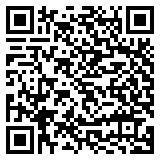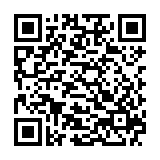Transcription and interpreting might seem like separate language services, but they share an important goal: converting spoken words into meaningful communication. While interpreters translate spoken language in real-time, transcriptionists capture speech and transform it into written text. Whether for legal proceedings, medical appointments, or business meetings, understanding the types of transcription can help you choose the right service for your needs—and can even complement interpreting services.
Let’s explore the three main types of transcription—verbatim, edited, and intelligent—and how they tie into interpreting services.
What Is Transcription?
At its core, transcription involves converting spoken words from audio or video recordings into a written format. This can be for interviews, conferences, court sessions, or webinars. Different transcription types serve different purposes, depending on how much detail is needed and how the text will be used.
Verbatim Transcription: Capturing Every Detail
What It Is
Verbatim transcription includes every single word, sound, and utterance from the recording. This means filler words like “um” and “uh,” false starts, repetitions, and even background noises (e.g., [door creaks], [laughter]).
When to Use It
- Legal or Court Transcriptions: Verbatim transcriptions are often required for depositions, hearings, or court records, where every detail is essential.
- Market Research: For focus groups and interviews, businesses may need to analyze how people speak, including hesitations and tone.
- Media or Script Production: Capturing everything helps writers or editors understand the natural flow of conversations.
Connection to Interpreting
For legal or official interpreting assignments, verbatim transcription can provide a record that complements the interpreted session. It ensures that no detail is lost, allowing for review or verification.
Edited Transcription: Polished but Precise
What It Is
Edited transcription removes unnecessary elements like filler words, stutters, or repeated phrases while keeping the core meaning intact. The focus is on readability and clarity without altering the original message.
When to Use It
- Business Meetings: Edited transcriptions provide a clear summary of discussions without distracting extras.
- Educational Content: Lectures, webinars, or training sessions benefit from polished transcriptions for easy comprehension.
- Media Publications: Journalists or content creators often prefer edited versions for quotes or articles.
Connection to Interpreting
Edited transcription can support interpreting services during multilingual business meetings or conferences. For instance, a clear transcript can accompany the interpreted content, ensuring all participants understand the key points.
Intelligent Transcription: Simplified for Clarity
What It Is
Intelligent transcription takes things a step further by paraphrasing and restructuring sentences to improve clarity. While it retains the essence of the conversation, it omits unnecessary words and organises ideas logically.
When to Use It
- Summaries or Reports: When you need concise and easy-to-digest information, intelligent transcription is ideal.
- Corporate Communications: Minutes of meetings or executive summaries often benefit from this approach.
- Educational Tools: Simplified transcripts help learners focus on the core message without distractions.
Connection to Interpreting
In long-term interpreting projects, such as workshops or training sessions, intelligent transcription can complement interpretation by providing a summarised written record of the event. This is especially useful for participants who want to revisit key takeaways.
Choosing the Right Transcription for Your Needs
To determine the best type of transcription, consider these factors:
- Purpose: Are you documenting legal proceedings or creating a study guide?
- Audience: Will the transcript be reviewed by a legal team, distributed to the public, or used internally?
- Level of Detail: Do you need every word captured, or just the main ideas?
How Transcription and Interpreting Work Together
Transcription and interpreting services are closely connected. Here are a few ways they complement each other:
- Post-Event Documentation: After an interpreted event, transcription provides a written record of what was said.
- Bilingual Records: For multilingual meetings, you can combine interpreting with transcription to produce transcripts in both the source and target languages.
- Training and Review: Interpreters and clients can use transcriptions to review sessions, improve accuracy, or provide feedback.
Fun Facts About Transcription and Interpreting
- Speed of Speech: The average person speaks around 125–150 words per minute. That’s a lot for interpreters and transcriptionists to handle!
- The Role of AI: While AI tools like speech recognition assist with transcription, human expertise is essential for accuracy and context.
- Multilingual Powerhouses: Some interpreting sessions involve up to 10 languages at once, requiring seamless coordination with transcription teams.
Wrapping It Up
Whether you need a word-for-word account, a polished summary, or a simplified version of your content, understanding the different types of transcription is key to achieving your goals. When paired with interpreting services, transcription becomes a powerful tool for creating accurate records, enhancing communication, and bridging language barriers.
So, next time you plan a multilingual event, webinar, or interview, remember that transcription and interpreting together can make your message truly universal!





0 Comments